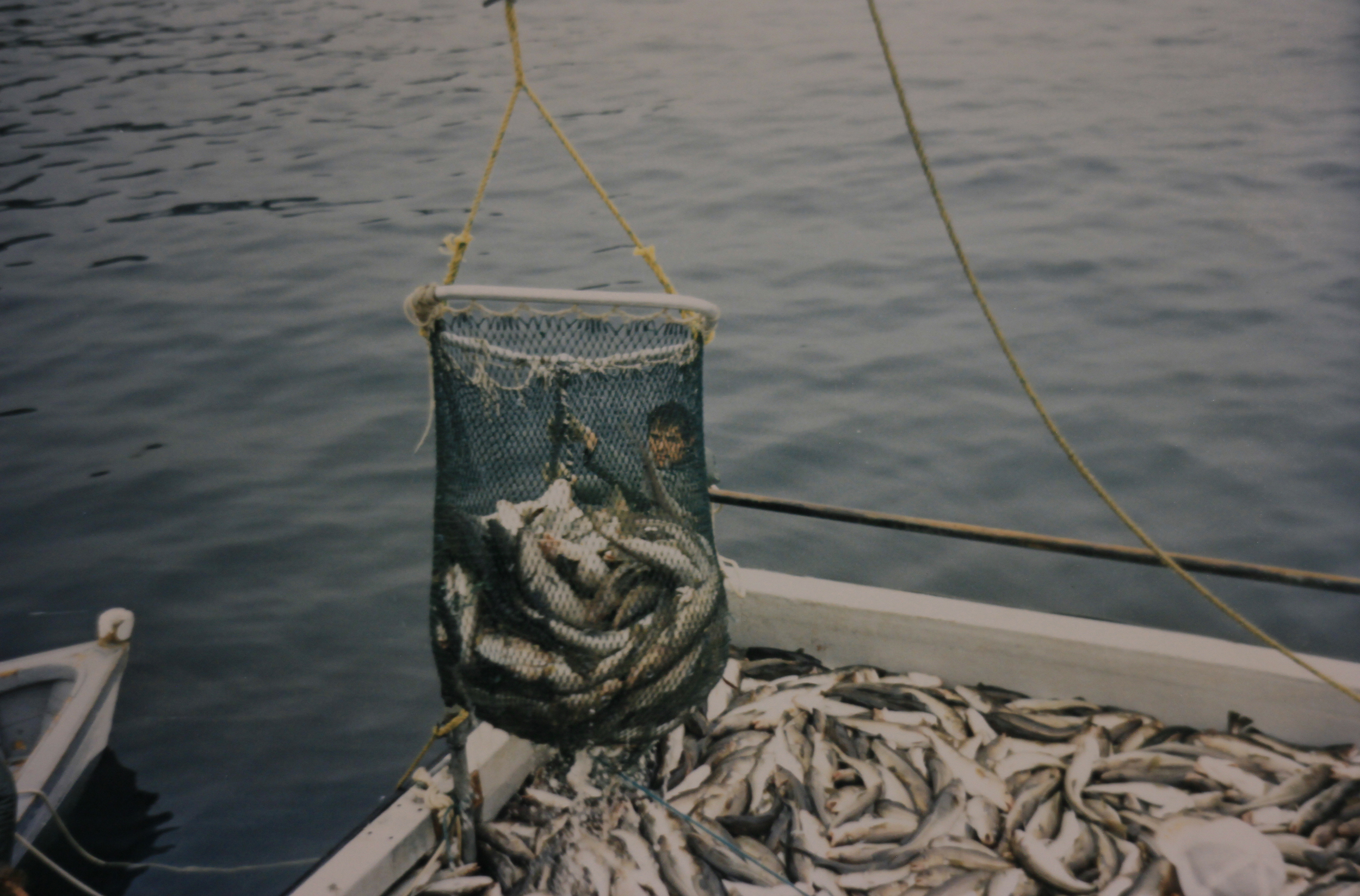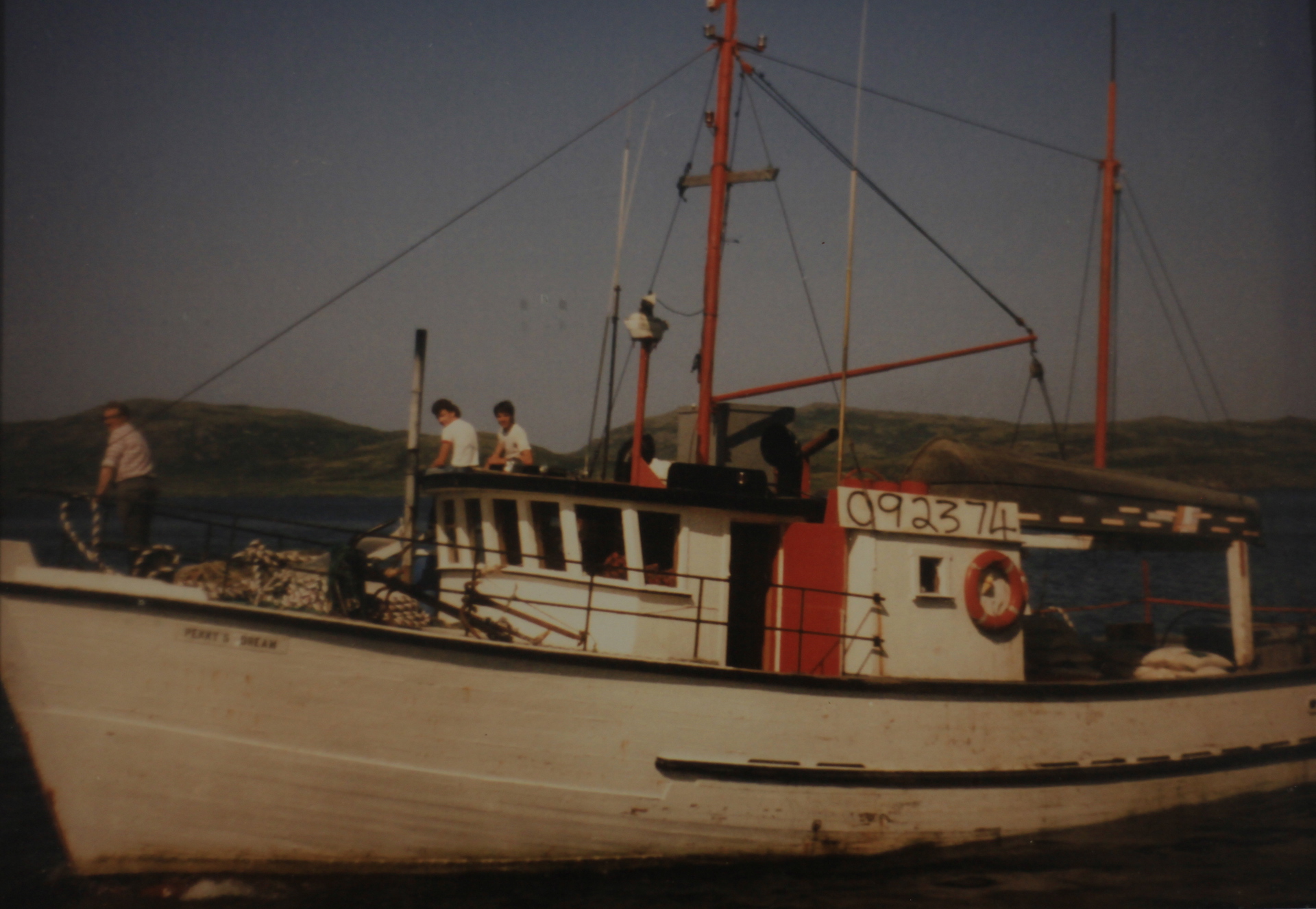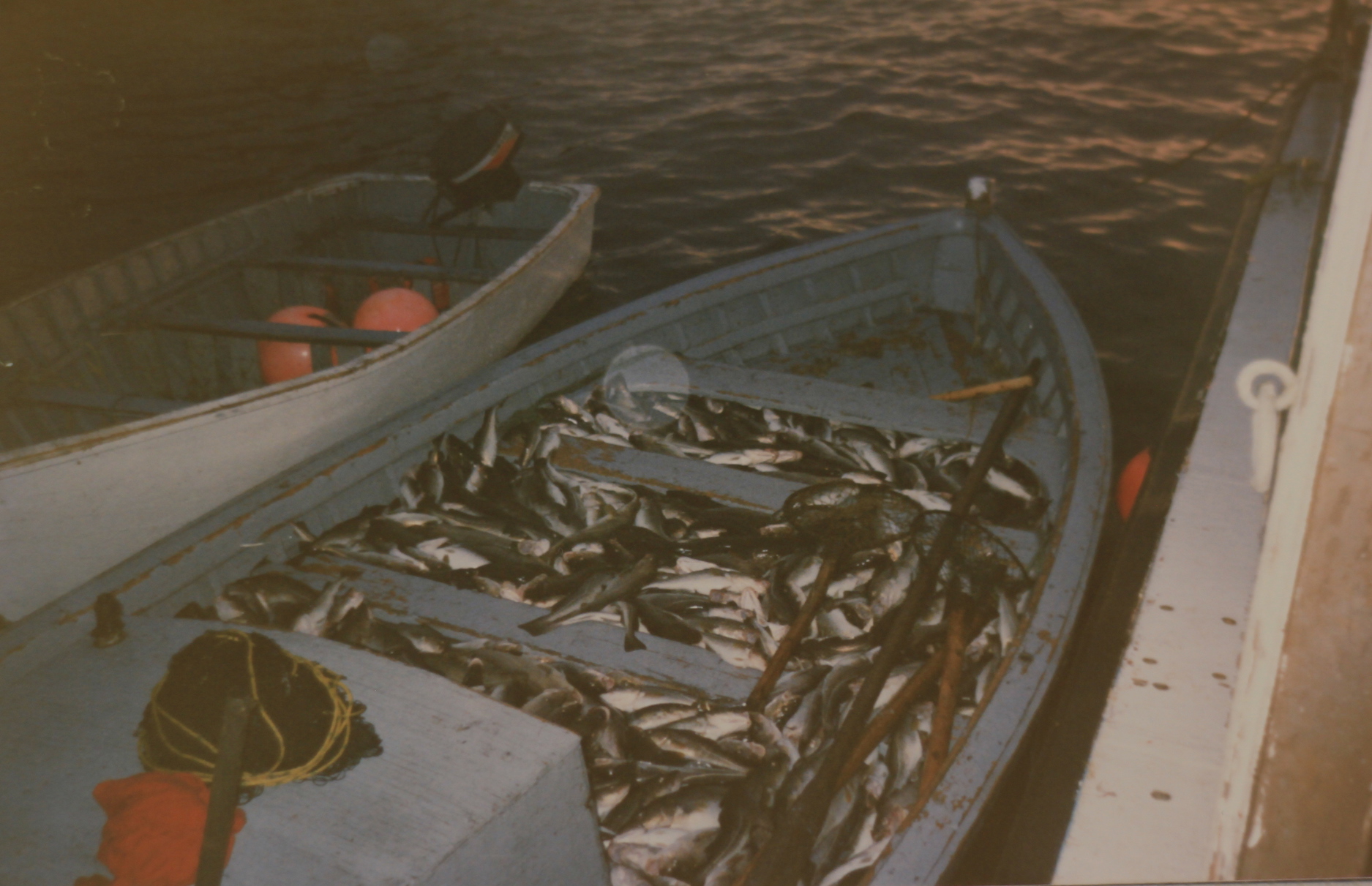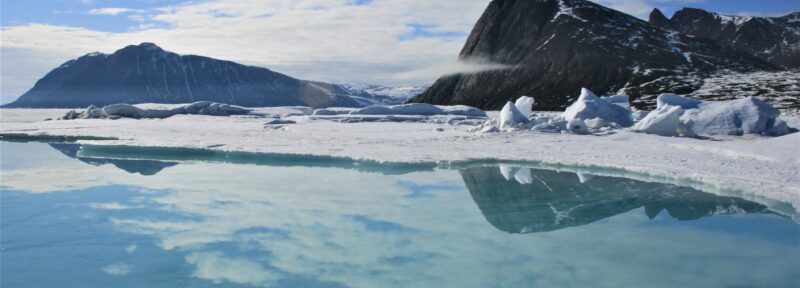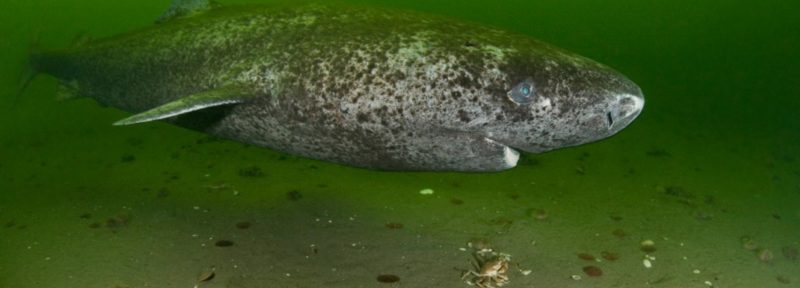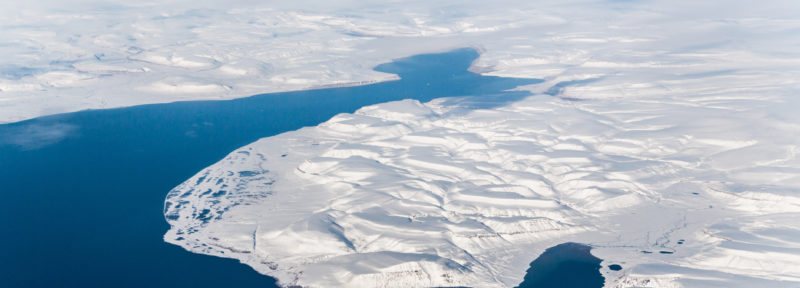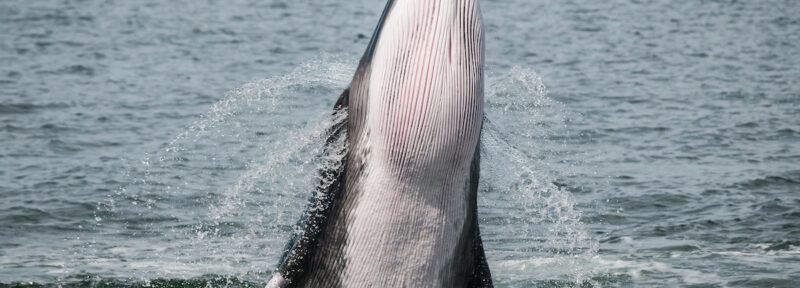Rebuilding Northern Cod: Has DFO’s New Plan Sealed Its Fate?
Trevor Taylor dipping out a codbag at Belle Isle, 1989.
Credit: Scott Saunders
In the spring of 1979, at the ripe age of 11, I went aboard a 21-foot open boat with my father, fishing lumpfish out of Lanse-aux-Meadows on the tip of Newfoundland’s Northern Peninsula. From that time on, every time his boat went, I was aboard.
As spring moved into summer, we fished cod: we had three gillnets, and we helped Max Anderson and his sons work their codtrap, taking a portion of the catch. And we handlined with jiggers and dabbers when fish were catchable in that fashion. We didn’t kill a lot of fish, as the saying goes, but with dad being a teacher, it wasn’t the primary income of the family. He was, in the parlance of the fishing community at the time, a moonlighter. And in that category, there was and remained for some considerable time a special level of disdain for teachers who fished, as they already had relatively well-paying jobs. However, many in the industry worked construction, drove school buses and took whatever jobs were available to supplement an insufficient income from the fishery. Moonlighter or not, he introduced me to boats and fishing, and to this day I can’t seem to drag myself far from either.
Perhaps I retain a somewhat romantic view of it all. But I am still inclined to think that it was a wonderful time to be a boy in rural outport Newfoundland. Boats were everywhere, and everyone who wanted to get aboard one pretty much could. They were, one might say, heady times. The recent release of the Northern Cod rebuilding plan by Fisheries and Oceans Canada (DFO) highlights the stark difference in the situation between then and now.
Cod was on the rebound following a devastating decline caused by overfishing from the distant-water fleets of Europe. In 1977, Canada’s declaration of a 200-mile exclusive economic zone beyond its shores secured the majority of the fishing grounds from the foreign fleets. This combined with massive recruitment in cod stocks throughout Atlantic Canada carried with it wild projections of a 400-thousand-tonne total allowable catch (TAC) for Northern Cod alone. It seemed like a time to go fishing, and many who had left in the early-to-mid ’70s returned to the boats. While some later characterized the fishery as “the employer of last resort,” in my experience it was a first choice for many. When the decline hit, the skills weren’t readily transferable, and the combination of that and other factors kept some trapped in a dying industry, but that’s different. Families were still big, the birth rate was high, the population was young and rural, and Newfoundland and Labrador, despite being essentially cash poor, was vibrant.
Everywhere you looked, it seemed, someone was getting or building a new boat: thanks to high levels of subsidization, the longliner fleet was becoming massive, and politicians were talking almost as much about the “vast untouched Northern Cod stock” as they were about the newly discovered Hibernia oil field. The offshore trawler fleet was being reinforced for fishing in ice, new trawlers with ice-strengthened hulls were being built and fish plants were popping up everywhere. By 1984, at the age of 17, I landed aboard a 52-footer for my first trip to Belle Isle with Glen Penney. The aptly named Penney’s Dream (misspelled by the boatyard as Penny’s) was built in 1979, in part with the money Glen had saved working as a miner in northern Ontario while dreaming of getting back home to the fishing boat, and it was one of the best-looking boats in the northern peninsula fleet. Built in the old style, with the wheelhouse slightly forward of midships, she had bunks and a galley down forward in the forecastle, a raking stem, smooth lines and was painted white with black trim. She was something to look at, especially with her deck awash with fish. I still have a photo of her on the wall of my home. I couldn’t believe my good fortune when Glen called me to ask if I wanted to go fishing with them! They were codtrap fishermen and sealers and they were very good at both.
Penny’s Dream leaving Quirpon with a load of salt for shore fishermen at Northeast Belle Isle, 1985.
Credit: Shawna Hillier
Up till 1984, the Penneys fished Belle Isle with two old-style box type Newfoundland codtraps, and like clockwork they arrived in Quirpon or Mary’s Harbour every two days with 35,000 to 40,000 pounds of fish. On my first trip to Belle Isle, they set their first Japanese-style codtrap. Where fish could swim in and out of the old box-style trap, the Japanese trap had a funnel similar to that found in a lobster trap (only instead of approximately 6 inches in a lobster trap it was 6 fathoms in a codtrap) and once in the cod could not find their way out. It was very efficient and compensated for slight catch declines in the box-style trap. In 1984 and 1985 the Penney’s Dream used one Japanese trap and two old-style box traps and we landed every two days with our trip of fish. We regularly caught more than 35 to 40,000 pounds in two days, but due to an inability to handle it all, the excess went to Glen’s brother, who often helped us haul the Japanese trap. Catches in the Japanese trap always varied between 25 to 40,000 pounds. Anything less than that and we would “run the leader” to check for holes or do some adjustment to the trap since there was obviously something wrong. 1987 was the first sign of real trouble. The fish at Belle Isle didn’t show up until late July, three weeks later than normal. With that we added a second Japanese trap to replace one of the box traps. The higher-than-normal price for cod masked the impact of a decline in catch, and with cod at 45-50 cents per pound, we all thought we had the world by the tail. It was short lived. By 1990, we were at four Japanese traps and after a very short season we landed 48,000 pounds total. It was just over what we would have gotten in one haul of one trap in one good day in years previous. For Belle Isle it was the end. We hauled it all aboard in early August and never went to Belle Isle again. For Northern Cod more broadly it was the beginning of the end.
A 28-foot trapskiff loaded with 10,000 pounds of cod. Every haul would average three loads like this.
Credit: Trevor Taylor
As the saying goes there are lies, damn lies and statistics. The statistics will tell you that what I am saying is not quite true. Statistically, 1990 was one of the best years for the “inshore fishery” and the late ’80s was consistently a period of higher-than-average landings for the inshore. But where the statistics tell the story at 40,000 feet, the real story is closer to the ground—or in this case, the water. The “inshore fishery” changed dramatically during the late ’80s. Forget the increasing level of fishing gear deployed by inshore fishermen; forget the change in gear, like the widespread conversion from box traps to Japanese traps, for example, all of which contributed to increased catching efficiency in the inshore, and look instead at the movement of the “fleet.” Where much of the Northeast coast longliner fleet (and many small-boat fishermen) had fished adjacent to their home port or gone to “the Labrador,” they instead headed south. Black Tickle, Punchbowl, Smokey and a hundred other coves and harbours had once been crowded with crews from La Scie, Twillingate, and a hundred other communities along the Northeast Coast; now St. John’s, Bay Bulls and a dozen other harbours along the Southern Shore filled with many of those same crews fishing the Virgin Rocks, the 40 Fathom Edge, 3NO and Tobin’s Point. They landed a lot of fish from offshore, statistically counted on the “inshore” allowance, and they had a few good years. But north of that, inshore and off it was decreasing abundance, increasing despair, claims of a stock in trouble on the one hand and assertions of localized catch failure on the other.
It’s 29 years now since the last full season of Northern Cod fishing ended, a generation. At 24, I was aboard the Cape Cordell when we landed in St. John’s for the last time on December 6, 1991 from Tobin’s Point. Even the youngest amongst us in those days is hitting 50; I am 53. It’s easy to forget how many fish there were, it’s easy to forget the systematic decline in catches from north to south, it’s easy to pass off all or most of the collapse as due to ocean environmental cooling, and it’s very easy to forget how much fishing effort was directed at the Northern Cod stock as it collapsed before our eyes. It’s easy to look at recent inshore catch rates and conclude that high catch rates in a fishery with less than 10 percent of the effort directed at it in the late ’80s means there is more fish now than there was then. And it’s easy to forget that even among those who fished then and continue to fish now, few though they might be, they didn’t see a hell of a lot of fish off their hometowns—for if they did, they wouldn’t have travelled to “the Labrador” in droves to live in little more than shacks for summer after summer. The problem with it all, referred to as the problem of shifting baselines, is one of perspective, loss of reference points and an erosion in institutional knowledge both in DFO and in that institution called the fishery. This is why the Northern Cod rebuilding plan is, in at least one respect, a disappointment.
To be clear, I don’t believe anyone can truly construct a rebuilding plan for any fish stock. And clearly, as evidenced in the late ’70s, stocks can and do rebuild without them. We have so little control over the marine environment and are in many respects so inconsequential that we cannot plan the rebuilding of the population. And this I suppose is where much of the criticism, bordering on mockery, comes from in industry quarters. But a rebuilding plan is necessary: not to manage the rebuilding as such, but to manage our actions, minimizing our impact on the stock and the ecosystem the stock depends on in order to allow rebuilding to occur. And this is where the deficiency in the Northern Cod rebuilding plan is most apparent. The stated objective of the Northern Cod rebuilding plan, whether attainable or not, is not to rebuild to historic levels of abundance, distribution, spawning stock biomass, fishable biomass or any other historic indicator; it is simply and deficiently to rebuild out of the “critical zone.”
Looking ahead I see two likely scenarios for Northern Cod, neither terribly optimistic. The most optimistic gets us a stock where the TAC hovers mostly around where it is, 12 to 15,000 tonnes, and if I let myself get really optimistic, maybe it doubles before we knock it down yet again. The other scenario sees Northern Cod dwindle from its present peak due to a combination of continued fishing mortality and increasing challenges from climate change, as has happened on the Scotian Shelf. Some species need abundance to be resilient. It protects those populations from extremes in their environment, ocean warming and cooling, recruitment failure, and the like—issues that Northern Cod has experienced in our lifetime, and surely many times over its history. Yet, to use a health care analogy, the Northern Cod rebuilding plan does not aim to return the stock to health; it simply aims to get it out of the critical care unit.
As stated, I don’t believe we have enough control over the marine environment to ensure rebuilding, but if our goal is only partial rebuilding, then surely we will never rebuild. We control fishing mortality, that’s it, and we can choose to limit fishing effort and allow the stock the opportunity to grow, or we can allow the fishery to increase, limiting the stock’s growth potential and its opportunity to rebuild. Constructing a rebuilding plan is not terribly different conceptually from taking a photo. You can choose to focus your lens on a close objective blurring that which you might see further out, or you can expand your view to see all that is possible in front of you. It’s about choices in the end, and some choices limit what we might otherwise see.
Trevor Taylor is Vice-President of Conservation at Oceans North.

